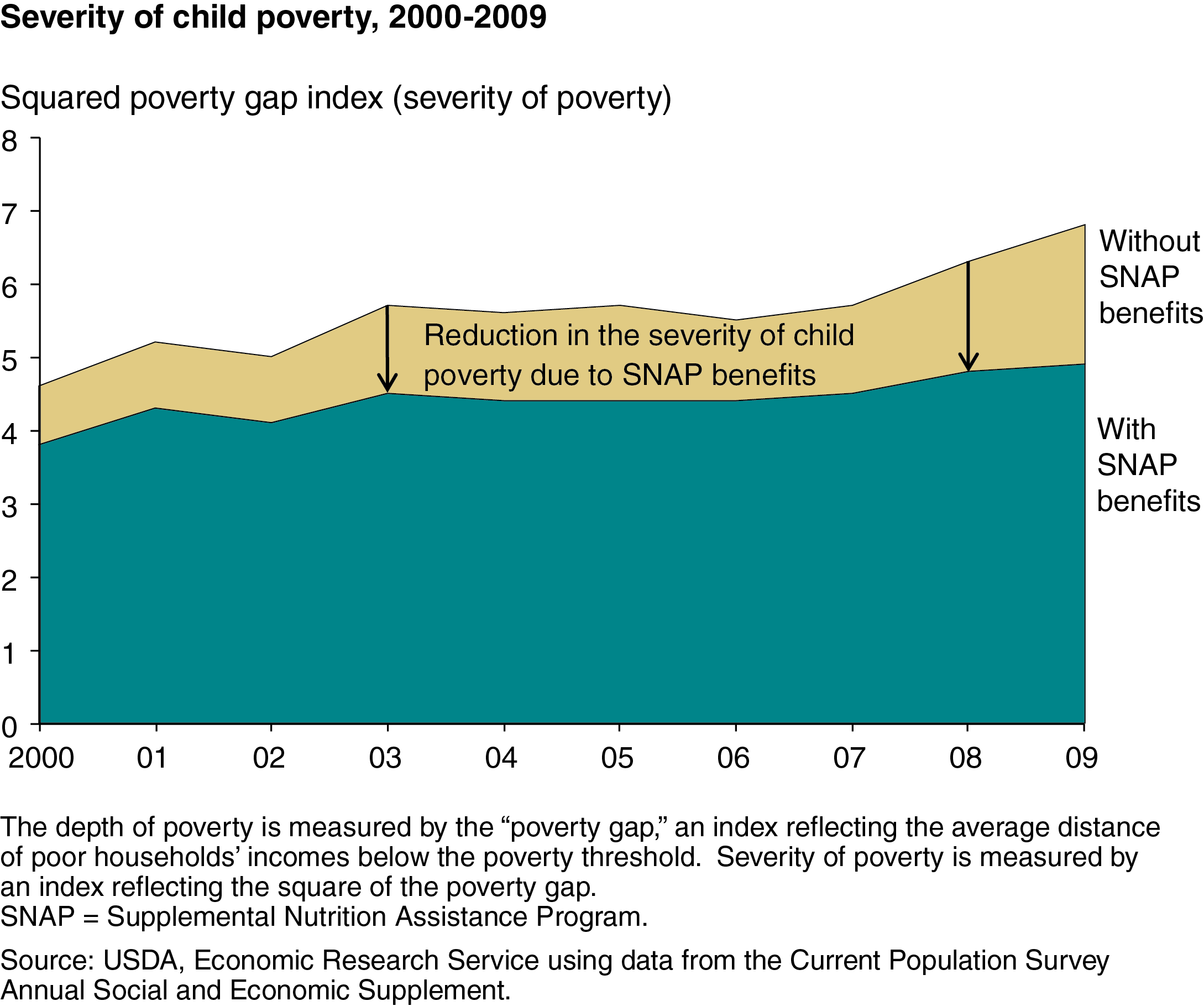SNAP benefits mitigated increases in severity of child poverty during the 2007-09 recession
- by Economic Research Service
- 7/10/2012

The poverty rate for children grew from 17.4 percent in 2006 to 20.7 percent in 2009, as many families' incomes fell during the 2007-09 recession. Official poverty estimates do not include non-cash assistance, such as benefits from USDA's Supplemental Nutrition Assistance Program (SNAP), as income. A recent ERS study found that including SNAP benefits in family income would have lowered the poverty rate for children to 18.7 percent in 2009. SNAP benefits also ensured that the severity of child poverty increased only slightly from 2006 to 2009 despite worsening economic conditions. Severity of poverty was measured using an index that reflects the square of the poverty gap, defined as the average distance of poor families' incomes below the poverty threshold. Without SNAP, the severity measure would have increased from 5.5 in 2006 to 6.8 in 2009, an increase of almost 24 percent. With SNAP benefits, severity rose by only 11 percent. This chart appeared in "SNAP Benefits Alleviate the Incidence and Intensity of Poverty" in the June 2012 issue of ERS's Amber Waves magazine.


